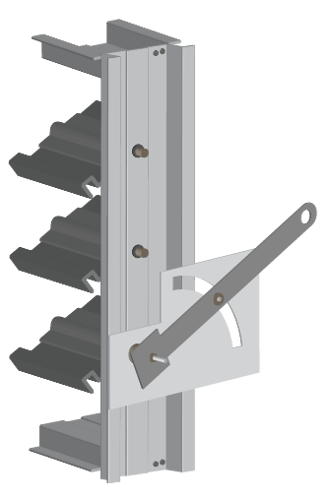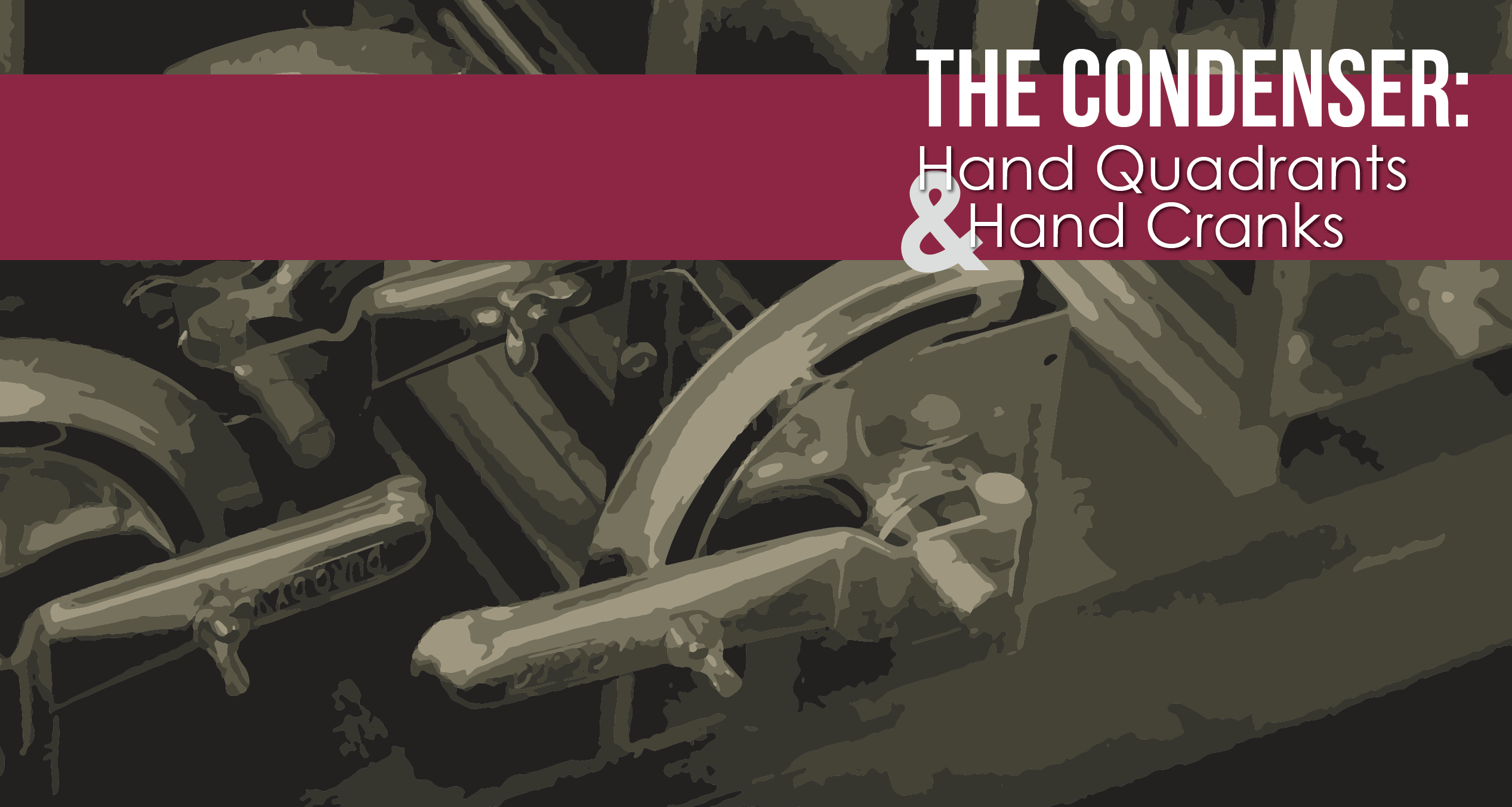There are many kinds of actuation available, but hand power will always be the cheapest. Learn about two kinds of manual actuators with this quick Condenser read.
Manual Actuators
Actuators can use electric motors or air pressure to move adjustable blades, but the cheapest option will always be hand powered. Manual actuators are a cheap option for units installed in easily accessible areas. These actuators need an operator present to control the actuator. If you don’t need automation, then consider adding a manual actuator. The two most common types are the hand quadrant and the hand crank.
Hand Quadrants

Hand quadrants are levers tied to the unit’s driving blade axle. An operator will directly control the blades of the unit by operating the hand quadrant. Hand quadrants provide a one-to-one action for blade rotation. The blades will move with the lever. As the quadrant moves, the lever will rotate the driving blade axle, which operates the unit's linkage, and all connected blades will turn with it. This makes it easier to quickly set the blades to fully open or fully closed.
Hand quadrants work well with balance dampers and modulating control dampers with multiple blade positions. Once the blades are in position, operators can lock them in place with the quadrant's locking pin.
Hand Cranks
.webp?width=260&height=500&name=Actuator%20Profile%20-%20Manual%20(Resize).webp)
Hand cranks are rotary cranks connected to the unit’s linkage via a crank assembly. The crank assembly is typically mounted on the face of the unit, near the jamb, and connected to the in-jamb linkage at the unit’s driving blade axle. As an operator rotates the hand crank, the crank assembly will engage the unit’s linkage to rotate the blades.
Operators need access to the unit’s face and enough space to fully turn the crank. Hand cranks have incremental rotation. Each rotation will translate to a minor rotation. Operators will need to rotate the crank several times to achieve a fully open position.
.webp?width=500&height=287&name=Hubspot%20Blog%202023%20-%20C%26Q%20Crank%20and%20Quadrant%20(Resize).webp)
Manual actuators require adequate space to access and operate the actuator. Whether operators will pull a lever or turn a crank, they need the space to move the actuator from fully open and fully closed. Ensure your manual actuators have adequate space on all sides.
Hand power is the cheapest option for actuators. If you have easy access to a unit, consider saving some money. Add a hand quadrant or a hand crank.
For more on actuators and other accessories, check out these Newsstand articles:
- The Condenser - Open and Closed, DPI Switches
- Options for Control Dampers
- Control versus Balance - The Difference Between Dampers
Continuing Education and MCDLG
Brush up on control dampers with a free continuing education course! "An Introduction to Air Control Dampers" covers the basics: damper types, important stats, air flow principles, and more.
Complete the course at your own pace online and earn continuing education credit from AIA, ASHRAE, and many other industry institutions. Meet your CE requirements with MCDLG!
Need help with a current project? MCDLG is here to help. We have over 50 years in the HVAC industry, building louvers and dampers for all sorts of applications. Contact us online and let us answer your questions. Let us put our experience to work for you.
.webp?width=91&height=70&name=MCDLG%20Logo%20(Resize).webp)






